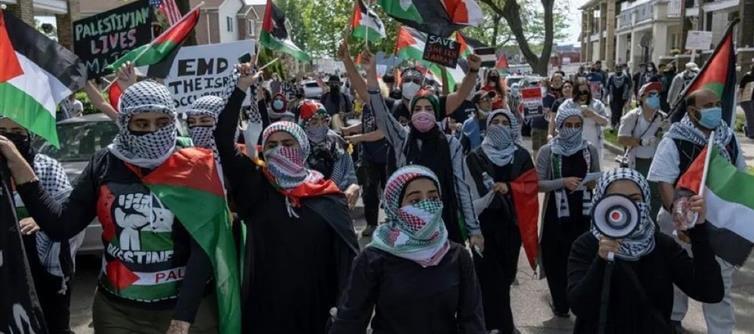
The Image and Context
The image attached to the tweet depicts a group of protesters marching on a street, many of them wearing traditional Islamic attire such as hijabs and keffiyehs. They are holding Palestinian flags and signs with messages like "Palestinian Lives Matter," "End the Israeli Occupation," and "Save Sheikh Jarrah." The protest appears to be taking place in a Western urban setting, as suggested by the architecture and the presence of an American flag in the background. The image likely depicts a demonstration related to the Israeli-Palestinian conflict, a topic that has been a focal point of global activism, particularly in the united states, in recent years.
Dr. Maalouf’s question—"Why is that?"—is rhetorical, implying a critique or suspicion about the motivations behind Muslim immigration to the U.S. after 9/11. The attacks, carried out by al-Qaeda operatives, led to heightened scrutiny of Muslim communities in the U.S. and globally, as well as significant changes in immigration and security policies. Yet, the statistic cited by Dr. Maalouf suggests that Muslim immigration increased in the years following the attacks, a point he uses to provoke discussion.
Responses and Reactions
The tweet quickly garnered attention, with several users replying to express their views, many of which echo anti-immigration and Islamophobic sentiments. For instance, @ElMiniChingon suggested that Democrats, under former President barack obama, "engineered this to 'fundamentally transform' society," reflecting a common conservative critique of progressive immigration policies. @GodsGrace777333 went further, directly blaming obama and other Democrats for hating America, attaching an image with the text, "In the world today the greatest lie of the 21st century is that islam is a religion of peace."
Historical Context
The statistic Dr. Maalouf cites—4.5 million Muslims in the U.S., with 80% arriving after 9/11—requires scrutiny. While I don’t have access to real-time data to verify this exact figure, historical trends can provide context. According to the Pew Research Center, the Muslim population in the U.S. was estimated at around 3.45 million in 2017, making up about 1.1% of the population. Projections suggest this could grow to around 8 million by 2050, but the 4.5 million figure for 2025 aligns with growth trends. The claim that 80% arrived after 9/11 would mean roughly 3.6 million Muslims immigrated in the 24 years between 2001 and 2025. This is plausible given global migration patterns, refugee resettlements (e.g., from Iraq, Syria, and Afghanistan), and family reunification programs, but the exact percentage would need verification.
Post-9/11, the U.S. did see an increase in Muslim immigration despite heightened security measures like the Patriot Act and the creation of the Department of Homeland Security. Factors contributing to this include the U.S. wars in afghanistan and Iraq, which displaced millions, leading to refugee programs that resettled many Muslims in the U.S. Additionally, immigration policies under both Republican and Democratic administrations continued to allow for family-based immigration and diversity visas, which included Muslim-majority countries.




 click and follow Indiaherald WhatsApp channel
click and follow Indiaherald WhatsApp channel